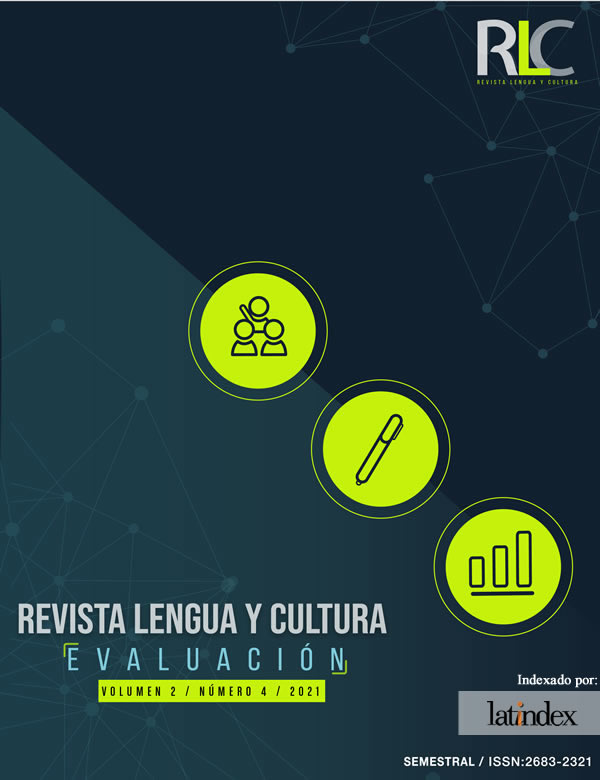Challenges and advances in teaching Spanish to foreigners at a Mexican university
Abstract
Spanish has recently become a prominent language in the world. According to the 2020 report of the Cervantes Institute, more than 585 million people speak Spanish as their mother tongue and as second or foreign language. Native speakers reach almost 489 million. This language is the second most spoken mother tongue by number of speakers, and in the global population there are 7.5% of Spanish speakers. Today more than 22 million students study it as a foreign language. However, there are several factors which limit foreigners from coming to Mexico to learn the language. At the heart of the matter lies the fact that Mexican Spanish our variant is not a variety widely recognized in other countries. Other examples are the lack of materials to teach our variant, but also the situation of teaching Spanish to foreigners in Mexican universities. The aim of the present article is threefold. First, it describes the current situation of Spanish teaching for foreigners in a university in central Mexico. Second, it evaluates some of the language policies to promote the teaching and learning of this language. It finally explores the challenges that the stakeholders have perceived in this context, concerning teaching, and learning practices with a view to strengthening the teaching of Spanish at this institution.
Downloads
References
Centro Virtual Cervantes (2018) “Situación del español en el mundo”. Recuperado de: http://www.cervantes.es/bibliotecas_documentacion_espanol/situacion_espanol_mundo/presentacion.htm.
----------------- (2020) “El español: una lengua viva. Informe 2020”. Recuperado de: https://cvc.cervantes.es/lengua/espanol_lengua_viva/pdf/espanol_lengua_viva_2020.pdf.
Creswell, J. W. (2014) Research Design: Qualitative, Quantitative, and Mixed Methods. Sage.
Dörnyei, Z. (2007). Research methods in applied linguistics. Oxford University Press.
Edinumen (2021). https://edinumen.es/
INEGI (2020) Migración. Recuperado de: https://www.inegi.org.mx/temas/migracion/.
---------- (2007) Los extranjeros en México. México. Recuperado de: https://imumi.org/images/articulos/AgregadosDic/Proyectos/extranjeros_en_mexico_inegi_2001.pdf.
Instituto Cervantes (2021) https://www.cervantes.es/default.htm
Kaplan, R. B., & Baldauf, R. B. (1997). Language Planning from Practice to Theory. Clevedon: Multilingual Matters.
Pérez Velasco, M., & González Freire, J. M. (2008). ¿Por qué estudiar español como lengua extranjera y no otra lengua? En XXI Foro de Especialistas Universitarios en Lenguas Extranjeras: Aprendizaje de Lenguas Extranjeras en Contextos Multiculturales e Indígenas. Tuxtla Gutiérrez: Universidad de Ciencias y Artes de Chiapas. Pp. 37-44. Recuperado de: https://viancep2012.files.wordpress.com/2012/11/memoria-feule-2008.pdf.
Ruiz Zambrana, J. (2009). La situación actual de la lengua española en el mundo. Contribuciones a las Ciencias Sociales. Recuperado de: http://www.eumed.net/rev/cccss/05/jrz.htm.
Suárez García, J. (2021) todoELE. http://todoele.es/home
Tollefson, J. (1994) Planning Language, Planning Inequalities. London: Longman.
Universidad Autónoma de Querétaro (2020). “Cursos de Español para Extranjeros (Spanish Course)”. Recuperado de: https://fll.uaq.mx/index.php/cursos-extra.
Universidad de Guanajuato (2019). Plan de Desarrollo Institucional 2010-2020. Guanajuato. Universidad de Guanajuato. Recuperado de: https://www.superprof.mx/blog/estudia-espanol-mexico/
Universidad de Guadalajara (2020) “Programa de Español para Extranjeros (PEPE)”. Recuperado de: http://www.cgci.udg.mx/pepe/
Universidad Nacional Autónoma de México (2020). “Centro de Español para Extranjeros (CEPE)”. Recuperado de: https://www.cepe.unam.mx/
Universidad Veracruzana (2020) “Escuela para Estudiantes Extranjeros (EEE). Recuperado de: https://www.uv.mx/eee/
Copyright (c) 2021 Virna Velázquez-Vilchis , Edgar Emmanuell García Ponce

This work is licensed under a Creative Commons Attribution-NonCommercial-NoDerivatives 4.0 International License.













